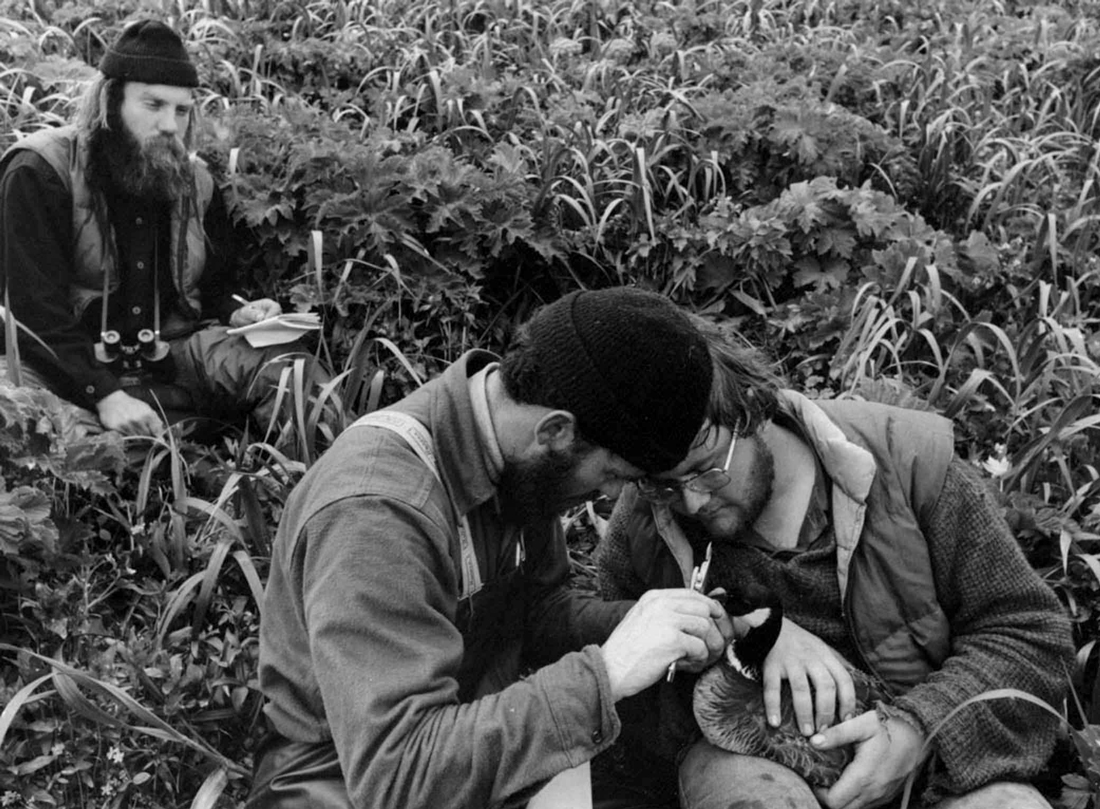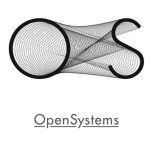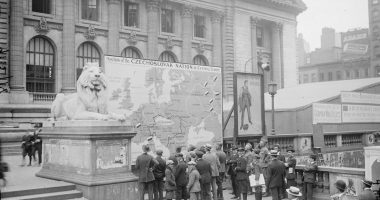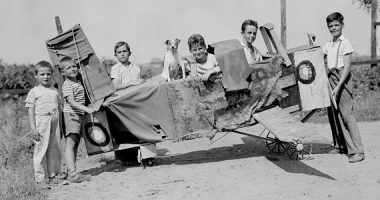
Men in field working with Canada goose | Wikipedia | Public domain
Why take part in a citizen science project? Why get involved and dedicate time and effort to collecting geolocated information, activating a sensor or classifying observations? This article takes a look at some examples that involve individual learning and a strengthening of the sense of community. It also notes the growing trend to consider citizen science as action, strengthening its ability to create social change and understanding participation as a process of individual or collective transformation. The article is part of a series about citizen science based on the experience of OpenSystems.
The oldest citizen science projects have typically justified the call for participation by arguing that resources are limited. Scientists at universities or research centres argue that they can’t be everywhere and that citizens can help to cover geographic areas out of their reach or carry out tasks that would otherwise take decades to complete. For example, since the 1980s nature enthusiasts are called upon to widen the network of observers of migratory birds in a project from Cornell Lab’s pioneering citizen science group in the United States. And amateur astronomists have been called on to classify millions of faraway galaxies through Galaxy Zoo, a global initiative first promoted by astronomers at Oxford University.
The success of these citizen science projects is based on the internet boom and readily available digital tools like mobile phones, which make it possible to combine the efforts of amateurs spread out across the planet. Interest in taking part in these projects is seen as a given. Who wouldn’t be interested in protecting the environment or being able to better discover the limits of the universe? Nevertheless, as citizen science has matured and diversified, the questions about what, how and when to take part have intensified.
Citizen science know-how, the so-called science of citizen science, has enriched the projects by taking into greater account the perspectives of the participants. It includes materials for accelerating autonomous learning about a real research project and thus promoting the study of STEM. Its mechanics also consider new types of informal education, both lifelong and in the community, something which has boosted the creation of alliances with museums, science centres and any type of space for social or cultural relations.
If we go a step further, we can view citizen science as research spurred on by a desire for change. In an abstract sense, citizen science changes the scientific model that developed over the 20th century, regulated only by academics and the institutions that they belong to. But in a more specific and surely more extreme sense, citizen science has the ability to answer citizens’ concerns. Citizens cast off the role of simple participants to become promoters of research, just as occurs in collective processes for creating knowledge and in research and community action models.
The case of Public Lab demonstrates the point. This non-profit organization arose to provide a fast response to an environmental catastrophe: an oil spill from a BP petrol tanker in the Gulf of Mexico in the year 2010. The fact that the authorities had banned people from flying over the affected zone did not stop fishermen from sending up balloons a metre in diameter at a height of a few hundred metres and taking aerial photos of the zone. The collection of photos showed the world the true dimensions of the tragedy, directly contradicting false claims by the petrol company. The same strategy has allowed court cases to be won against illegal dumping in various rivers in the United States and this method has even made it possible to monitor the encroachment of the controversial Gaza border.
Collective mapping is a version of citizen science that has enabled a detailed response to other emergency situations such as the leak at the Fukushima nuclear plant in Japan in 2011 by Safecast. Organisations such as the Red Cross are now adopting participative strategies for humanitarian crises. On a more day-to-day and urban level, the Extreme Citizen Science group at University College London is known for having gotten a scrap yard’s licence taken away. The scrap yard was close to a residential zone and was shown to have systematically broken the noise limits set by the United Kingdom’s Environment Agency. Noise pollution was also the subject of a Project led by Ideas for Change at the noisy Sol Square in Barcelona in 2017. The noise measures were brought about by annoyed neighbours and had a major impact in the media.
Returning to England, Mapping for Change, a social company that arose from the same Extreme Citizen Science group, gives neighbours support in evaluating air quality and making reasoned decisions to reduce the associated risks to health. The case of Mapping for Change also represents an alternative means of conceiving the transfer of knowledge that needs to be reinforced by universities and research centres. A case with spectacular impact regarding air quality is that of CurieuzeNeuzen which was first (in 2017) able to influence the rerouting of the major ring road that circles Antwerp (Belgium) and then enter the debate for an electoral campaign at state level. Likewise, as part of the xAir Project led by the Barcelona Centre for Contemporary Culture and for which we were the co-creators, over 600 students and families from 18 primary schools in Barcelona measured air pollution at 725 points across the city during the months of February and March 2017. The precision and geographic extension of this pollution measurement was unprecedented in the city.
Another well-known experience was the Flint water crisis (United States, 2016) with its massive lead poisoning, which enabled the case to be brought before the Senate. There are also other relevant experiences in Barcelona such as D-Noses, to control unpleasant urban smells and design measures to combat them, or MosquitoAlert, to investigate and control mosquitos that spread disease, to name just two more.
Citizen science can also play a role in problems of a purely social nature. At OpenSystems, together with the Mental Health Federation of Catalunya, we’ve investigated the roles of carers and family members in the mental health community care model. The research is based on the concerns expressed by this community, which was the one that took part. Other projects for citizen science cocreated with different groups deal with such current issues as domestic violence, the use of public space and access to living spaces.
Data and their scientific rigour are fundamental in ensuring that citizen science initiatives have the credibility and social impact they deserve while at the same time being a source of new knowledge worthy of publishing in high-impact scientific journals. The right combination of these two elements is what can assure real changes on many levels.
Wide and diverse participation will be increasingly relevant to bring about actions through permanent dialogue based on socially robust knowledge, rooted in a context. Citizen science can be a counterweight to fake news and, even more importantly, can become a main factor in new models of democratic participation and collective decision-making proposed by so-called technopolitics. It is by participating that we will discover, acknowledge, understand and decide.
Members of OpenSystems who have participated in writing this article: Isabelle Bonhoure, Anna Cigarini, Josep Perelló and Julián Vicens.





Leave a comment